Saxifragaceae family characteristics; Rock breakers
Have you ever stopped to observe a small plant that literally grows between the cracks of a rock? You have likely seen a member of the Saxifragaceae Family Characteristics. This group of plants is fascinating. They show resilience and beauty that seem to defy nature’s laws.
These plants have a strong name. Saxifragaceae comes from Latin and means “rock breaker.” They also have many interesting botanical stories to share.
Has it ever happened to you that a plant surprises you by where it decides to grow? It happened to me on a hike in the Pacific Northwest mountains. Among the damp moss and rocks, I saw a tiny white flower with five petals. It looked delicate but seemed indestructible
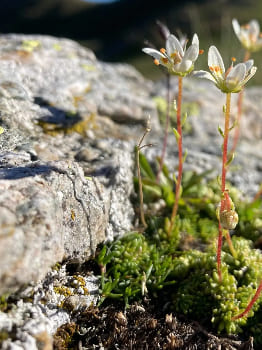
Morphological characteristics of the family Saxifragaceae
Diverse and surprising leaves
The Saxifragaceae comprise some 600 species grouped in approximately 30 to 33 genera, widely distributed in the Northern Hemisphere. Many different ecosystems suit them.
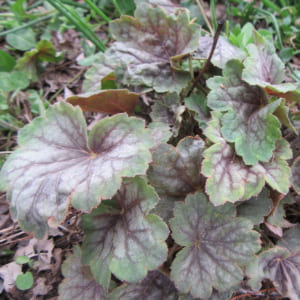


These range from sunny, wet meadows to rocky, high mountain slopes. Can you imagine the same plant family living in both deep forest shadows and scorching lava beds? Well, they do.
The leaves usually appear simple and basal, although they may arrange alternately depending on the genus. For example, species of the genus Saxifraga have leathery, somewhat succulent blades with toothed margins. In contrast, in the genus Heuchera, the leaves are usually hairy, lobed and with palmate veins.
Most species have rounded, multi-lobed basal leaves, which is key to their identification.
Tiny but complex flowers
The inflorescences are usually in the form of terminal panicles, open or dense. The flowers, although small, usually less than 6 mm in diameter, are complex and perfectly symmetrical. In some species they can reach up to 12 mm, which within this group is almost a floral extravagance.

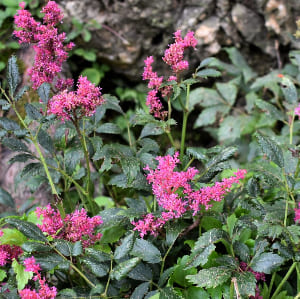

Each flower has five joined sepals and five separate petals, though some may be missing. It has between five and ten stamens. The ovary is in a higher position and has two joined carpels that form an oblong chamber.
This last feature is the oblong ovary with two separate styles. It is one of the main keys to identifying plants in this family. At maturity, this ovary transforms into a dry capsule that releases multiple tiny seeds.
Habitats and Ecology of Saxifragaceae Plants
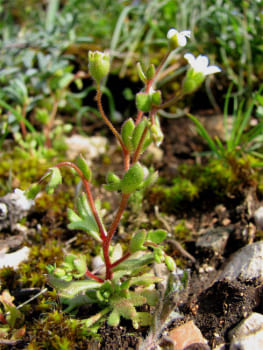
Where there’s moisture or rock… there they are
The Saxifragaceae family characteristics include impressive ecological adaptability. We can find them in rich river forests and thin soils on mountain tops. They grow right on rocks, as if to challenge them.
I remember a trip to the Andes. While walking by a stream, I found a saxifrage on a wet rock.
It embedded so perfectly that it seemed to originate from the mineral itself. It was one of those moments when nature makes you stop and admire it.
‘Ranunculaceae buttercups are often found next to saxifrages in humid areas’..
Relationship to water and wetlands
Many species, such as Saxifraga oregana, do particularly well in wet meadows. This environment allows its rhizomatous roots to find enough water to support its flower scape, which can reach heights of 30 to 120 cm. The greenish-white flowers appear at the end of the long, sticky stem due to the presence of glandular hairs.
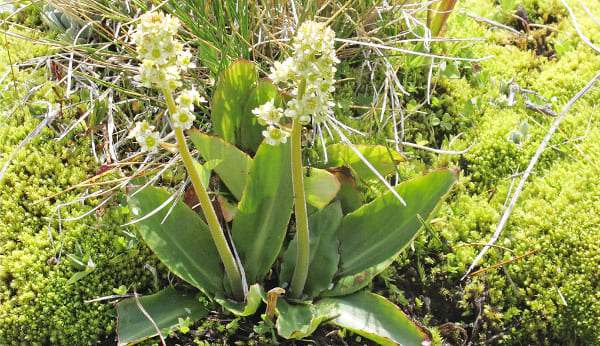
Once dried, the flowers leave brown capsules filled with tiny seeds (barely 1 mm), ready to start a new cycle in equally extreme conditions.
Ornamental value of the family Saxifragaceae
From the forest to your garden
Several genera in this family are popular in gardening, especially those that are shade tolerant. For example:

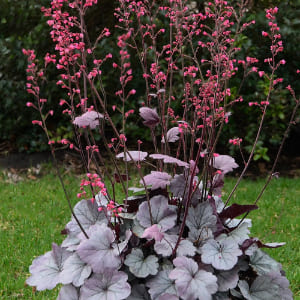
- Astilbe, with its spectacular fern-like foliage and pink or white flower spikes.
- Heuchera, also known as coral bellflower, whose colors range from light green to deep purple tones.
These plants not only decorate, they also add ecological and aesthetic value to wild gardens or shady areas. How about including one in your garden?
Notable species within the family
Saxifraga oregana – The marsh saxifrage
This perennial species is characterized by:
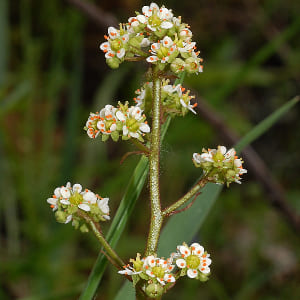
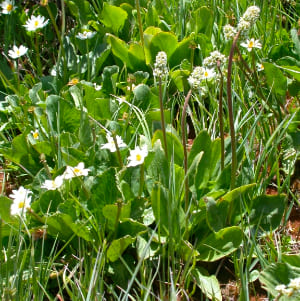
- Basal leaves, smooth and succulent.
- Small greenish-white flowers.
- Capsules filled with tiny seeds.
- Typical habitat: moist grasslands of the Pacific Northwest.
People can confuse it with other species such as Saxifraga integrifolia or S. ferruginea, so close observation is key.
Other interesting family members
Among the names you should know if you are interested in delving into the Saxifragaceae family characteristics are:
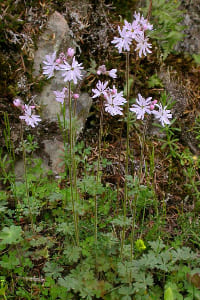
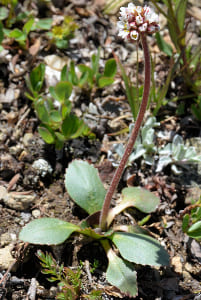

- Heuchera cylindrica – Alum root.
- Saxifraga odontoloma – Stream saxifrage.
- Micranthes rhomboidea – Diamond-leaved saxifrage.
- Lithophragma parviflorum – Forest star.
- Parnassia fimbriata – Although today classified in another family, it was for a long time part of this one.
Botanical resilience of the family Saxifragaceae and discrete beauty
The Saxifragaceae family characteristics invite us to admire resilience, understatement and versatility in nature. From a rock in the mountains to a shady spot in the garden, these plants show that no place is too tough for them to survive and thrive.
What about you? Where was the last time a small plant surprised you?


